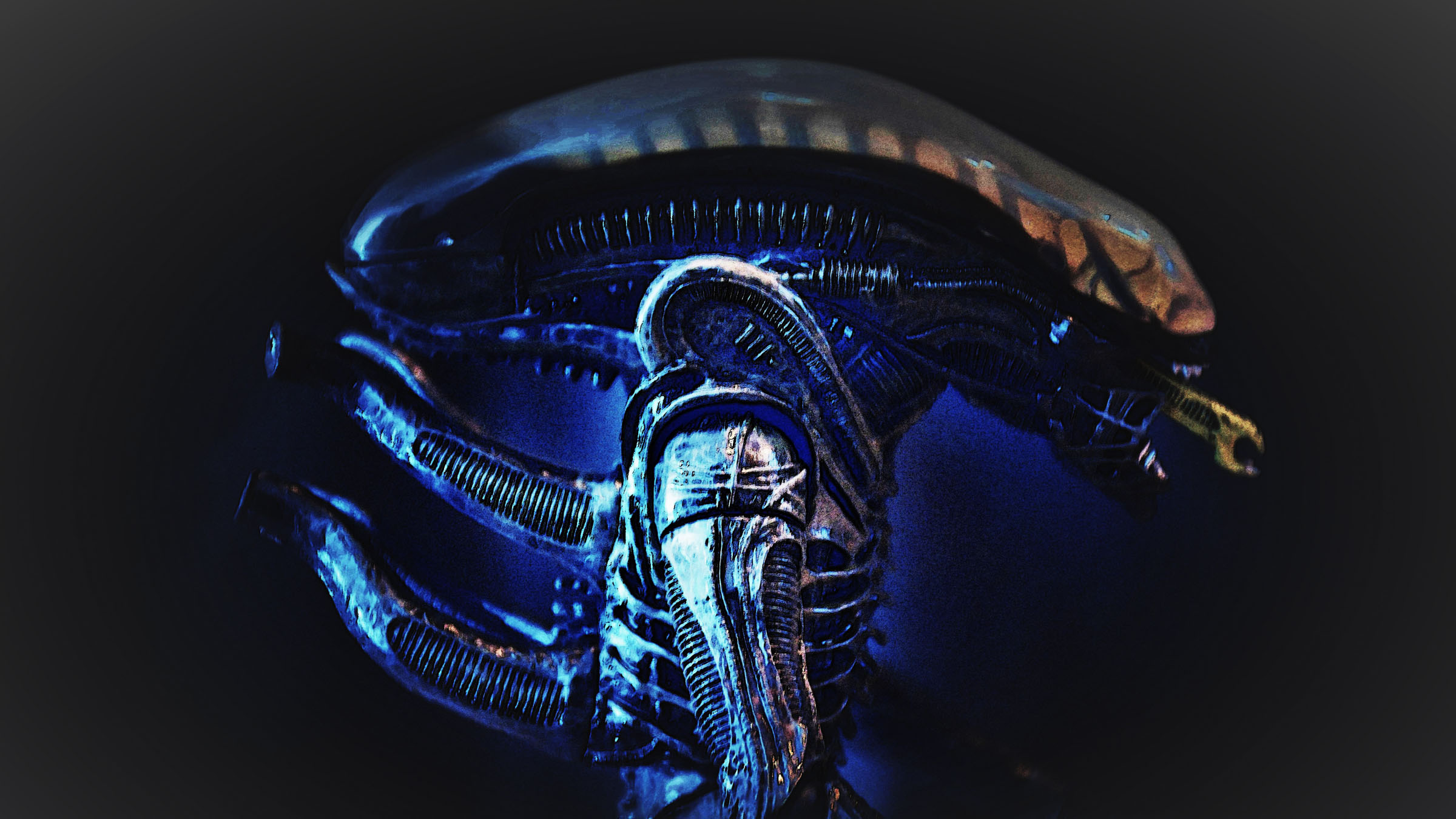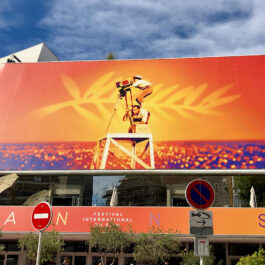For over forty years, the Alien films have been frightening and fascinating cinema fans the world over. Ridley Scott’s original, Alien, was a terrifying twist on the science fiction genre, which took a dark turn in the late 1970s after being mainly associated with optimistic tales of heroism such as Star Wars and Star Trek. The premise for Alien was embodied by the chillingly simple poster tagline: “In space no one can hear you scream.” Scott took a small, industrial-looking spaceship and turned it into a kind of haunted house, with terrified victims being picked off one by one as the iconic Xenomorph alien ran riot. It inspired a generation, and redefined the way we look at science fiction on screen.
James Cameron’s Aliens, turning 35 this year, added an action twist to create one of the few Alien franchise sequels that stands up to the original. However, there’s something about that first trip into the void which changed the way we perceive the genre – and changed how movies are made. Join us as we look through ten unique innovations the film has brought to Hollywood in the four nerve-shattering decades since…
Lost In Space
Alien is certainly not the first science fiction film to include elements of horror, or the first to point out the isolation of space. However, it was the first to combine those elements so successfully. Star Wars, which had only premiered two years previously, featured a hopeful galaxy where vast ships travelled between vibrant planets, and where good battled evil – often with success. In the previous decade, Star Trek and Stanley Kubrick’s 2001: A Space Odyssey both touched upon the notion of being stranded among the stars, but were more interested in profound questions of mankind’s exploration.
In Alien, however, the characters are alone. There is no federation to protect them, and help is light years away. Apollo 11 astronaut Michael Collins described the feeling of being alone in space as “absolute isolation”; Alien leans into this idea, making space a threat to be feared rather than a frontier to be boldly explored. This has been used to inspire many classics since, such as Event Horizon, Moon and Oscar winner Gravity.
Futuristic Realism
One trope of science fiction is to wow audiences with the creator’s vision of the future. What Scott did differently was portray a future where everyone was, quite frankly, not impressed! The setting of the first film is a dark, industrial freighter where everyone on board is more interested in getting paid than going where no man has gone before. The crew were played by older, seasoned actors rather than matinee idols, and looked like the type of characters who had already been on the job for too long. A grittier, more cynical vision of the future is commonplace nowadays, with many directors setting stories in desolate landscapes with rusty spacecraft and weary characters. In stripping the optimism from the future, Alien became something altogether more believable. This dark, worn atmosphere would influence future hits like Pitch Black and Scott’s 1982 film Blade Runner.
Women In Action
Key to the film’s success is its iconic lead, Ellen Ripley. Memorably played by Sigourney Weaver, she became one of the most famous characters in movie history and an icon of science fiction. While popular female characters existed in the genre prior to Alien, few were the focus of their films in the same way as Ripley. Avoiding the hyper-sexualised presentation of female characters that was common at the time, Weaver is seen as a groundbreaker in portraying strong female sci-fi leads. She was not there to be rescued, and she fought on an equal footing with her male counterparts – particularly in the more action-focused sequels that came along. A captivating mixture of strength and sensitivity, It’s hard to imagine a character such as The Terminator‘s Sarah Connor, The Hunger Games hero Katniss Everdeen, or Rogue One‘s Jyn Erso existing without her influence.
Motherhood In Sci-Fi
Motherhood is a prevalent theme throughout the Alien saga. The very notion of space is linked to birth and creation, while Ellen Ripley has her own daughter figure in James Cameron’s sequel. The recurring theme is introduced in the first film, as writers needed a way for the alien to get on board without being noticed. The idea of ‘impregnating’ one of the crew came up, inspiring the legendary chestburster scene (more on that later). A violent moment that became the film’s signature, it tapped into our own primal fears of birth and death. Motherhood has continued to feature as a big theme in space- or alien-themed films ever since – it was key to the story of Amy Adams’ character in Arrival, Sarah Connor in The Terminator, and Eva Green’s role in recent hit Proxima. The mixing of the personal and metaphysical will always capture our collective imagination, but rarely has it been done as vividly as in Scott’s first film.
The Slasher Movie
You might not immediately link Alien with a genre made famous for its masked killers hunting teenagers, but Alien was indeed one of the forefathers of the slasher horror genre. Partly inspired by The Texas Chainsaw Massacre, and arriving around the same time as fellow landmark movie Halloween, the film has all the hallmarks of a slasher classic: an unknown, wordless killer picking off victims one by one, with a female protagonist being the final adversary. While it’s true that the home of the slasher movie is deemed to be small town America, it owes much of its genesis to the Nostromo.
Pixel Inspiration
Diverting from cinema briefly, Alien and its subsequent sequels have had a hand in inspiring the history of video games as well. Legendary franchise Metroid borrows many themes from the film, and even the names of two of its characters (Ridley, after the director, and Mother Brain) are tributes to the story. Microsoft’s hit Halo series also proudly celebrates the films in its tone, character design and storytelling. Taking most of its inspiration from the marines of the second movie, developer Bungie has confirmed that the film franchise played a part in the game’s early development. Given that Halo is often considered for silver screen adaptation, this impact could also result in new cinematic masterpieces.
The Genius Of Giger
One of the key creatives for the film was Swiss surrealist H.R. Giger, an artist who had been recommended to Scott by scriptwriter Dan O’Bannon through their work on an abandoned version of Dune. Giger’s 1976 print Necronom IV provided the design for the alien, and the artist’s biomechanical images became the basis for the overall look of the film (Giger would win an Oscar for his work). His aesthetic has inspired countless sci-fi movies to this day, and has featured in other genres (his design for The Batmobile was partially used for the film Batman Forever) and in music videos. His ability to tap into the things that terrify us has allowed him to live on as a cultural icon several years after his death in 2014, and Alien is the work that introduced most of us to the talented artist.
The Evolution Of The Movie Monster
Cinema history is rooted in monsters. King Kong, Godzilla and Frankenstein’s Monster were all stars of the early years of filmmaking. However, Alien‘s Xenomorph was at the forefront of a new generation of creature features that terrified cinema-goers in the 1980s, and demonstrated pre-CGI effects at their peak. Using animatronic puppetry and shadows, Alien could present a monster that felt organic – much more so than a fake-looking shark or a man in a lizard suit. Advances in make-up and special effects meant the Xenomorph, along with the eponymous monsters of Predator and Gremlins, could express themselves and come to life with terrifying attack mechanisms, such as the Xenomorph’s secondary jaws. Alien demonstrated the power of movies to truly bring the impossible to life.
Feline Rescues!
Many Alien fans will remember that Ellen Ripley wasn’t the only survivor of the events on the Nostromo. Ginger cat Jonesy is saved by Weaver’s hero, and the pair are seen together again in sequel Aliens. In fact, Jonesy and Alien became the muse for a hugely popular screenwriting book, Blake Snyder’s Save The Cat!. The book discusses a key moment in many films where a character proves themself to be someone you should care about, often through an act of kindness such as, well, saving a cat! The title itself was inspired by Ripley and Jonesy, where we see the four-legged crew member providing one of the few sources of comfort for our hero, who remembers to save him once the villain is defeated. The book is one of the best-selling screenwriting manuals in the world, meaning that the film has literally influenced how movies are conceived to this day.
Shock Value
For years after its release, the chestburster scene was upheld as one of the most frightening and intense sequences ever committed to film. The scene’s innocuous setting of the crew having a meal is interrupted by Kane (John Hurt) beginning to choke and shake, before a young alien creature bursts from his chest. Other films have spewed more gore, but few scenes have been able to brand themselves on the memory quite like this. It has consistently been considered one of the most iconic moments in cinema, something that is measurable in how many times it has been parodied in everything from The Simpsons to Ferris Bueller’s Day Off. Hurt himself recreated the scene for comedy in the 1984 spoof Spaceballs, turning to the camera and quipping “oh no, not again!”














Sorry, the comment form is closed at this time.